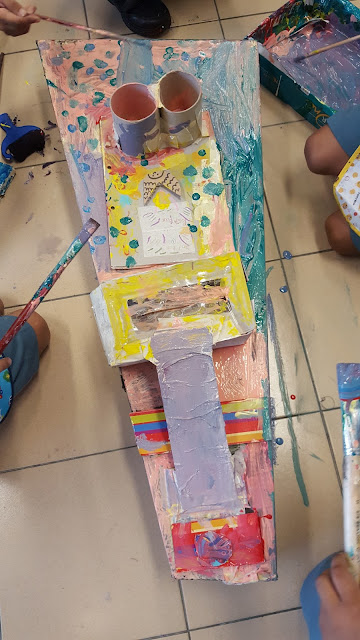When you were looking at the prototypes/ artwork that the children were making, has the thought of them wasting materials ever crossed your mind? By viewing them as "wasteful", "inefficient" or "redundant" may be a symptom of a culture focused on efficiency over innovation (Brown, 2009). There is so much in life that pushes us to move fast. Sometimes, a peeve of mine is asking the children to walk faster or move faster so that we can get more things done within that hour of lesson. In our culture, speed is of the essence. Our quality of learning is judged by the speed of knowledge acquisition. You're a fast learner is considered a compliment as opposed to You're a slow learner.
The arts is about savouring, or being immersed in an experience that seemed timeless and spaceless. A lot of time in school is spend on discursive language or quantitative forms, while these skills are of crucial importance, it does not encompass all of what humans know or how they make meaning.
Last week is my first time organising 30 seven years old for painting class. I found out through a quick survey that a handful of them had never paint before. I was mentally prepared for the mess and as though it wasn't enough, on days when I have painting class with my youngest students, I needed to ensure that I start the class with a full stomach to keep up with all the energetic bodies!
Prior to the painting class, the children did mark making with their oil pastels. I also got them to write their names on every single stick of the oil pastels as I can't imagine having to deal with complaints of missing sticks in the future. Some of them tried to justify themselves by saying that their oil pastels is 'different' (brand) from others but it's just a plain no from me.
I use recycled paper to wrap a cardboard box as a paint container so that the children can dip their foam rollers and paintbrushes easily. They were quite fascinated by how different colours mixed together to produce a new colour. When the children ask for another colour, I will just "clean" the box with an A5-size recycled paper so that the new addition of paint will not be contaminated by the previous colour. At the end of the lesson, the children will wash their brushes and place all of them in a grey container beside the sink. With this lesson, I will be able to introduce basic colour theory and discuss about textures in art.











